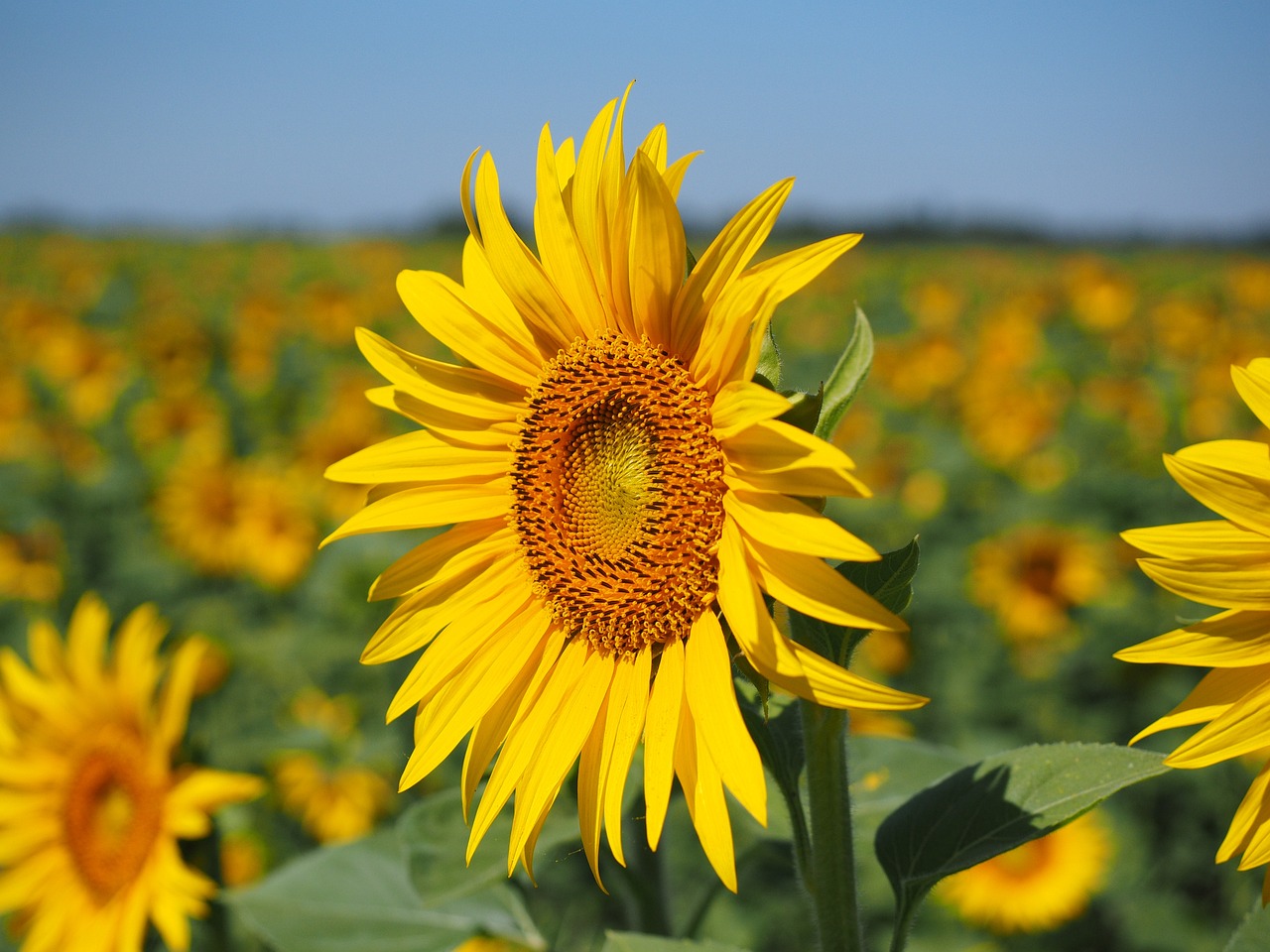
If you live in Zone 6, you’re in luck! This region, characterized by its moderate climate and distinct seasons, offers a wide variety of flowers that thrive in its conditions. In this article, we will explore the ten best flowers for Zone 6 cut flower gardens. This guide explores 10 exceptional flowers that thrive in Zone 6, offering a dazzling array of colors, shapes, and textures to transform your garden into a personal flower haven.
10 Best Flowers for Zone 6 Cut Flower Garden
Blooming Beauties: Annuals for All Seasons
- Sun-Kissed Symphony:
- Zinnias: These cheerful annuals come in a kaleidoscope of colors, from classic yellow and orange to vibrant pink and purple. Their single or double blooms, atop sturdy stems, make them excellent cutting flowers. Zinnias are easy to grow from seed, prefer full sun, and bloom continuously throughout the summer, rewarding you with endless bouquets.
- Sunflowers: Capture the essence of summer with these iconic giants. Towering varieties like ‘Russian Mammoth’ provide a majestic focal point, while shorter selections like ‘Sunbright Bicolor’ offer a charming touch. Sunflowers thrive in full sun and well-drained soil, and their long, sturdy stems make them perfect for tall arrangements.
- Cool Companions for Shady Retreats:
- Impatiens: These shade-loving annuals bring a touch of cheer to even the darkest corners. Their vibrant, trumpet-shaped flowers come in a wide range of colors, including pink, purple, and white. Impatiens are low-maintenance and prefer moist soil, making them ideal for beginner gardeners.
- Begonias: Beloved for their delicate beauty and diverse forms, begonias offer a range of options for shady cutting gardens. Fibrous begonias, with their cascading foliage and dainty blooms, add a touch of elegance, while tuberous begonias, known for their large, ruffled flowers, create a stunning statement. Begonias thrive in moist, well-drained soil and appreciate protection from the harsh afternoon sun.
Perennial Powerhouses: Lasting Color Throughout the Seasons
- Spring’s Delicate Delights:
- Peonies: The quintessential symbol of romance, peonies grace the garden with their large, fragrant blooms in late spring and early summer. Though they require minimal maintenance, their impressive size and short blooming season make them a treasured addition to any cutting garden. Choose varieties like ‘Sarah Bernhardt’ or ‘Festiva Maxima’ for their exceptional beauty and vase life.
- Columbine: These delicate, cup-shaped flowers add a touch of whimsy to the spring garden. Columbines come in various colors, including blue, purple, and white, and their long, slender stems make them perfect for adding height and airiness to bouquets. They prefer cool, moist soil and partial shade, thriving under the dappled light of early spring.
- Summer’s Showstoppers:
- Dahlias: Embark on a journey of color and form with dahlias. These versatile flowers, with their diverse bloom shapes and sizes, offer endless possibilities for creative arrangements. From the classic dinner-plate varieties to the charming pom-pom types, dahlias are sure to become a highlight of your summer cutting garden. Plant them in full sun and well-drained soil, and deadhead regularly to encourage continuous flowering.
- Lavender: Not just for fragrance, lavender is also an excellent cut flower. The long, slender stems adorned with clusters of fragrant purple blooms add a touch of elegance and a calming scent to bouquets. Lavender thrives in full sun and well-drained soil, requiring minimal care once established.
- Autumn’s Farewell:
- Asters: These late-blooming beauties provide a vibrant farewell to summer, extending the season of your cutting garden. Available in a range of colors, including purple, pink, and white, asters offer a diverse selection for autumn arrangements. They are low-maintenance and prefer full sun, adding a touch of color to the garden even as the days grow shorter.
- Goldenrod: Often mistaken for a weed, goldenrod is a valuable addition to the autumn cutting garden. Its tall, plume-like flowers come in various shades of yellow and gold, adding a warm glow to late-season bouquets. Goldenrod is low-maintenance and adaptable to various soil conditions, making it a perfect choice for beginner gardeners.
Frequently Asked Question(s)
Can I grow these flowers in other zones?
While the flowers mentioned in this article are well-suited for Zone 6, many of them can also be grown in other zones with similar climate conditions. However, it is important to note that some flowers may have specific temperature or environmental requirements, so it is always recommended to check the specific needs of each flower before planting them in a different zone.
Can I grow these flowers in containers?
Yes, many of the flowers mentioned in this article can be grown in containers. This is especially useful if you have limited space or if you want to have more control over the growing conditions of the plants. When growing flowers in containers, make sure to choose a container with adequate drainage and use a high-quality potting mix. Additionally, regular watering and fertilization may be necessary to ensure the health and vigor of the plants.
Can I use these flowers for arrangements and bouquets?
Absolutely! The flowers mentioned in this article are well-suited for use in arrangements and bouquets. They offer a wide variety of colors, shapes, and fragrances, allowing you to create stunning floral displays. The long stems of some flowers, such as Shasta Daisies and Hybrid Tea Roses, make them particularly suitable for use in arrangements.
Can I save seeds from these flowers for future planting?
Yes, in most cases, you can save seeds from the flowers mentioned in this article for future planting. However, it is important to note that some flowers may produce hybrid varieties that may not grow true to the parent plant from seeds. If you are specifically interested in preserving the characteristics of a particular flower, it is recommended to propagate through other methods such as division or cuttings.
